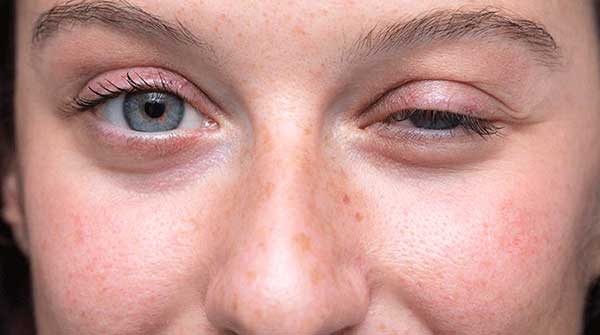Symptoms of myasthenia gravis include drooping eyelids, double vision, difficulty in speaking, chewing, breathing, and limb control
A team of researchers from the University of Alberta has made a groundbreaking discovery by identifying a universal biological marker for myasthenia gravis, a rare autoimmune disease. The team’s objective is to develop a swift, accessible, and uncomplicated diagnostic test for this condition, which affects approximately one in 5,000 people of all age groups but is more prevalent in women under 40 and men over 60.
Myasthenia gravis, often described as “severe muscle weakness,” manifests through various debilitating symptoms such as drooping eyelids, double vision, difficulty in speaking, chewing, breathing, limb control, and, in severe cases, can even be fatal.
In their recently published research, the University of Alberta team employed advanced proteomics techniques to examine blood samples from myasthenia gravis patients. They made a groundbreaking discovery: the blood levels of the protein fibrinogen were found to be 1,000 times higher in myasthenia gravis patients compared to both healthy individuals and those with rheumatoid arthritis, another autoimmune disorder.

Zaeem Siddiqi
 |
| Related Stories |
| Indigenous patients with autoimmune liver disease face worse outcomes
|
| Groundbreaking discovery in scleroderma research
|
| Research sheds light on mysterious “dark genome”
|
Principal investigator and neurologist Zaeem Siddiqi, who treats patients from Alberta and northern Canada, emphasized the importance of rapid and early diagnosis for this serious disease, where patients’ conditions can deteriorate rapidly.
Blood tests for myasthenia gravis currently assess one of three antibodies and can take several weeks to yield results. Moreover, depending on the specific type of the disease, these tests may be negative in 15 to 50 percent of patients with myasthenia gravis but no antibodies. The complex and overlapping symptoms of myasthenia gravis with other neurological conditions, such as stroke or multiple sclerosis, often result in an average diagnosis time of up to two years.
Siddiqi, a professor in the Department of Medicine, expressed optimism about their findings: “We have found a simple and universal biomarker for all types of myasthenia gravis, regardless of the stage of the disease, so I hope we can use this methodology to diagnose patients much quicker.”
The researchers examined blood samples from 31 myasthenia gravis patients, 30 healthy individuals, and 18 patients with rheumatoid arthritis. Utilizing several proteomics methods, they identified significantly elevated levels of fibrinogen, a protein typically associated with blood clotting, in 100 percent of the samples from myasthenia gravis patients. They subsequently replicated their findings using various techniques and confirmed the results using blinded samples.
While the cause of the elevated fibrinogen remains unknown, it is believed to be linked to ongoing inflammation, prompting the need for further investigation to fully understand the underlying mechanisms.
Myasthenia gravis is classified as an autoimmune disease in which the immune system targets its own tissues. In this specific condition, antibodies attack the junctions where nerves enter muscles, disrupting the transmission of electrical signals from nerves to muscles, ultimately leading to muscle weakness.
Treatment approaches aim to suppress this immune response. Although several new treatments have been developed over the past five years, Siddiqi notes they remain costly. He anticipates that streamlining the diagnostic process could facilitate faster access to effective treatments for patients.
Siddiqi’s team had previously conducted research using metabolomics, revealing other potential biomarkers for myasthenia gravis. However, these techniques are primarily available only in major medical centres. The newly discovered biomarker can be detected using simpler technology, making it feasible for use in smaller hospitals and rural centres.
The researchers also have hopes that this biomarker may aid in assessing patients’ response to treatment. Plans for a larger study to confirm their findings and advance the development of a more rapid diagnostic test are currently underway.
| Staff
The opinions expressed by our columnists and contributors are theirs alone and do not inherently or expressly reflect the views of our publication.
© Troy Media
Troy Media is an editorial content provider to media outlets and its own hosted community news outlets across Canada.
